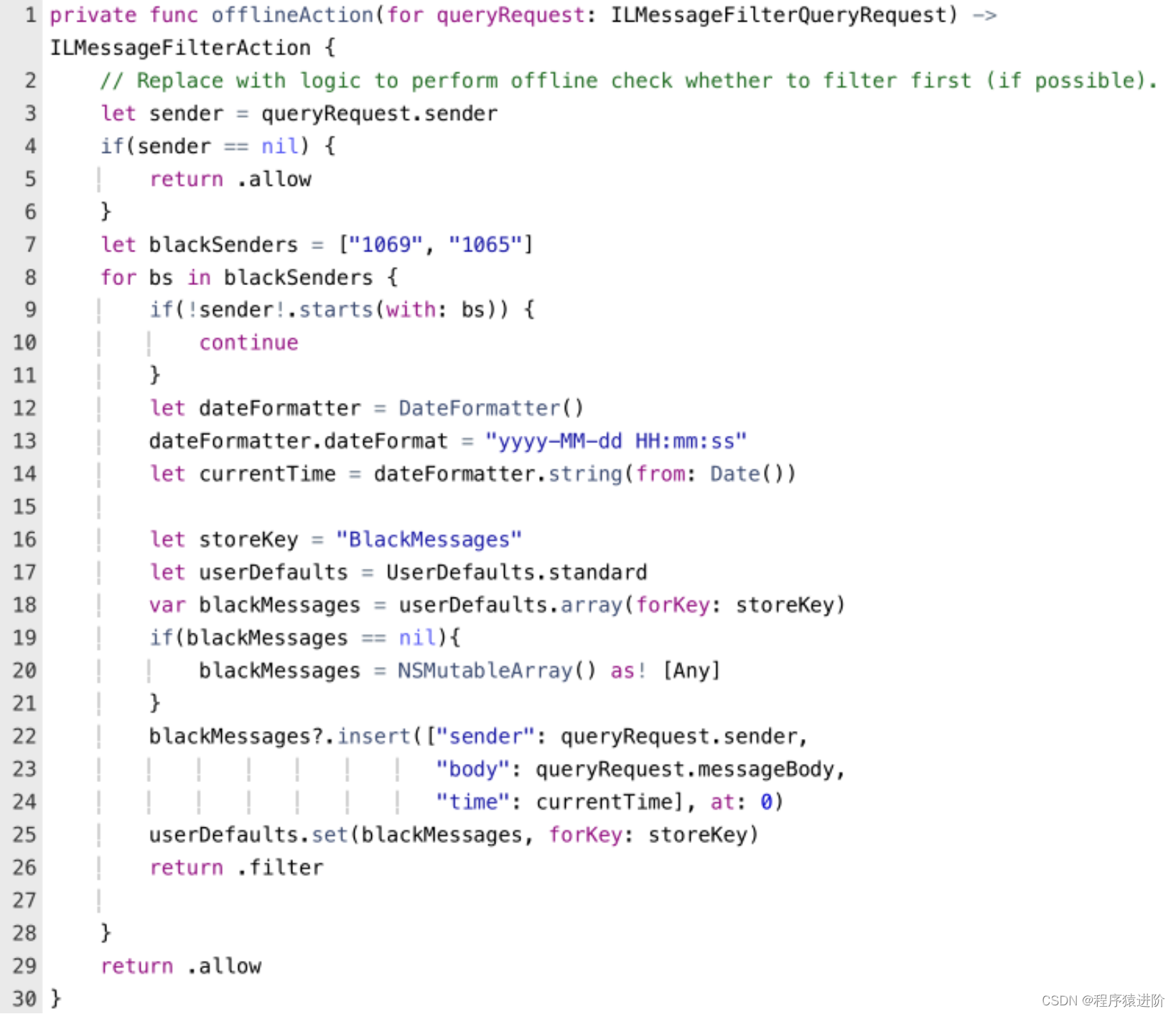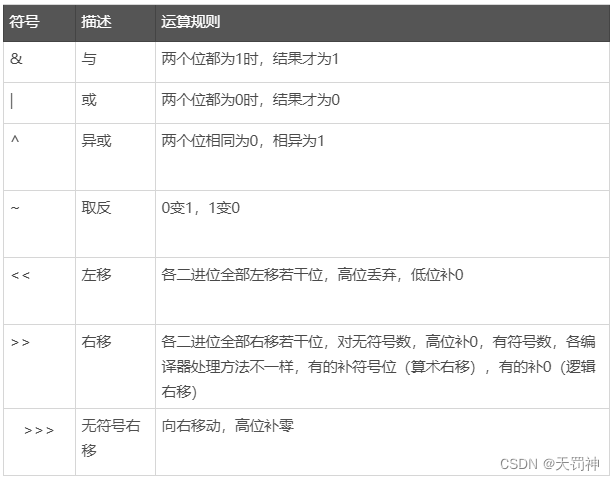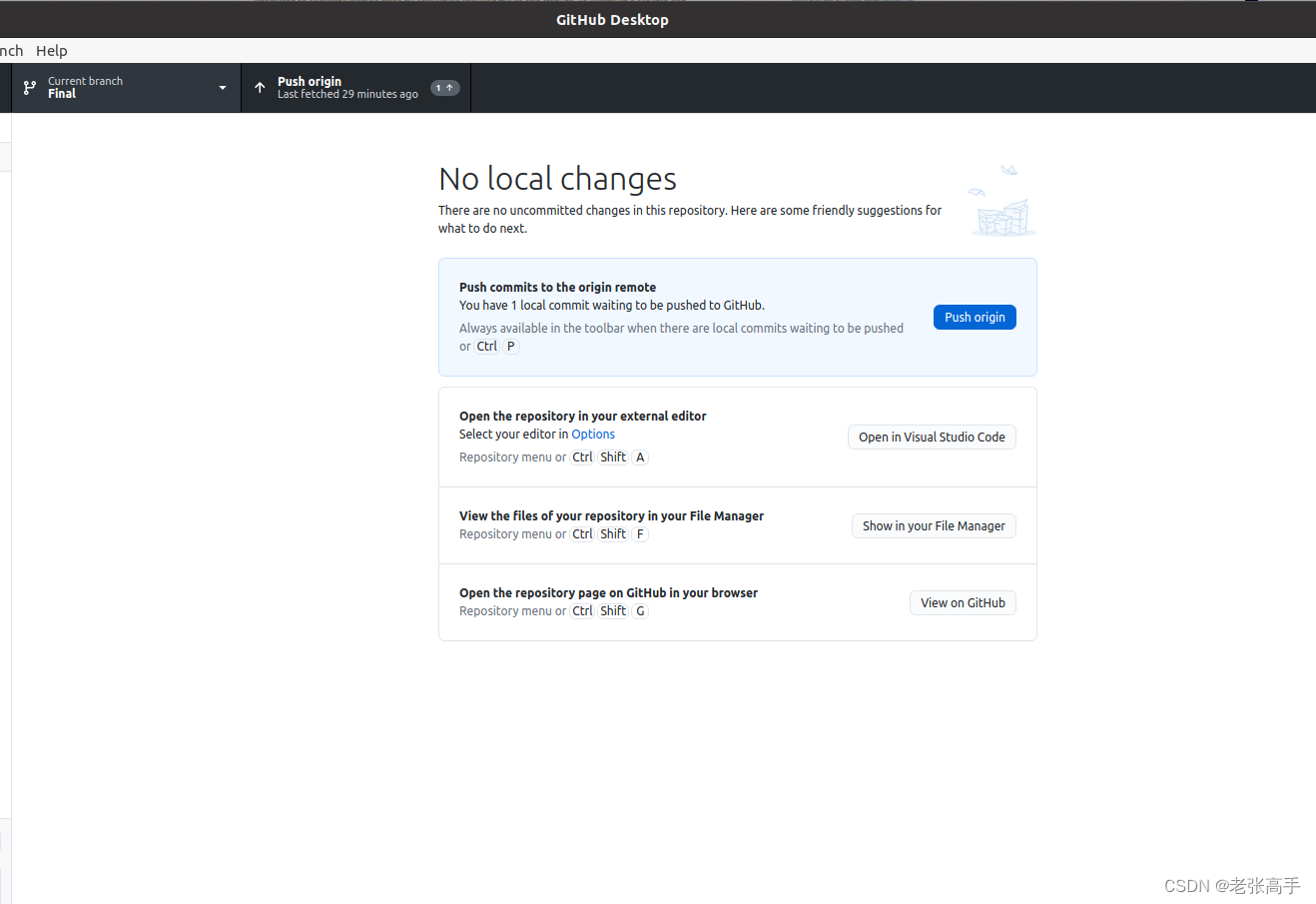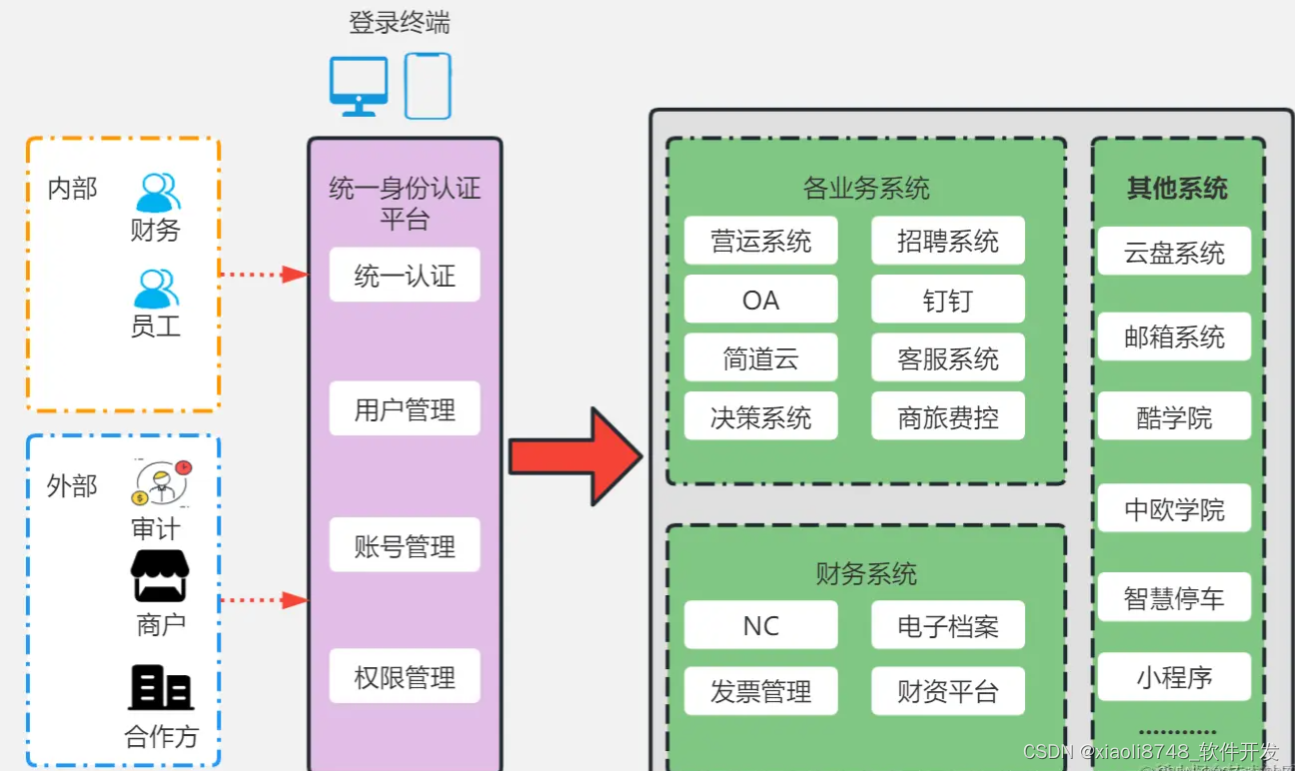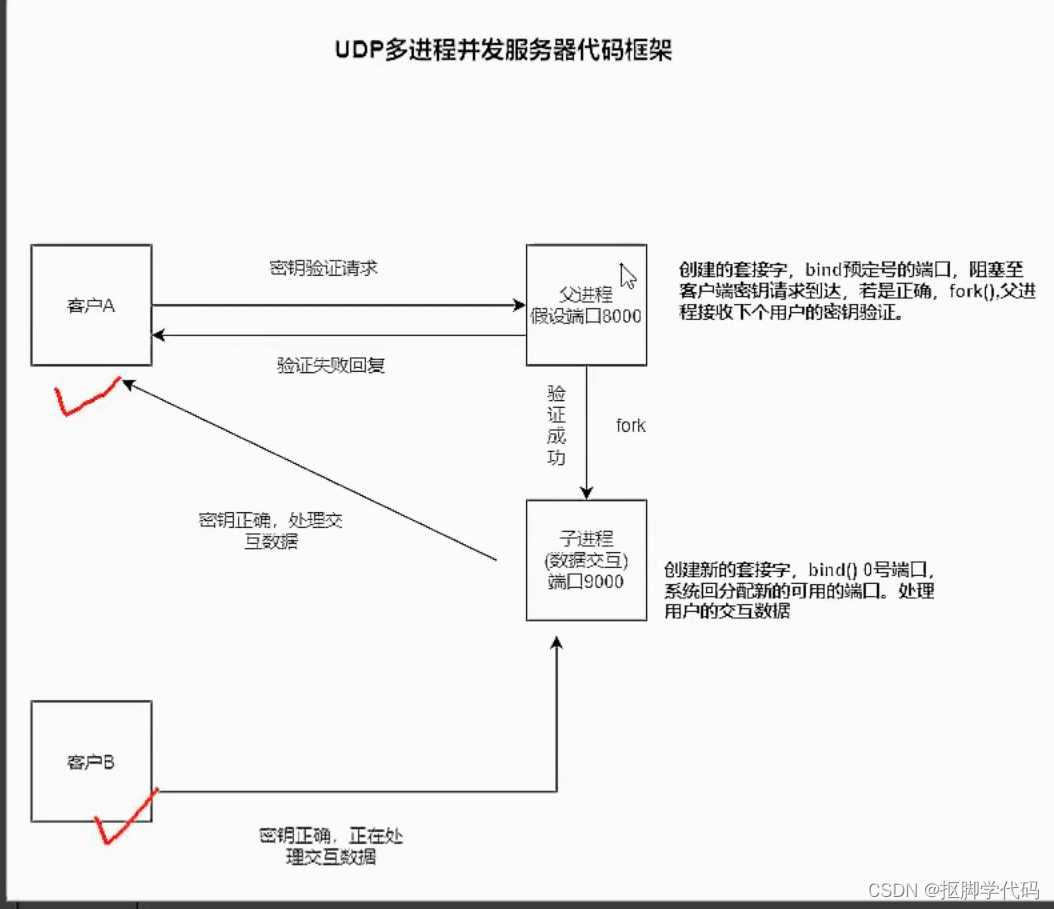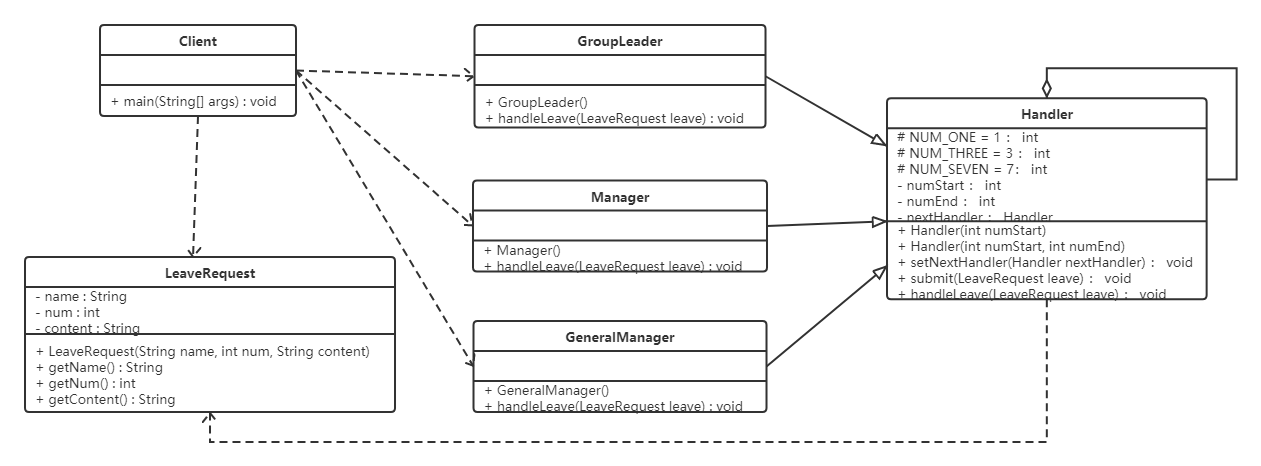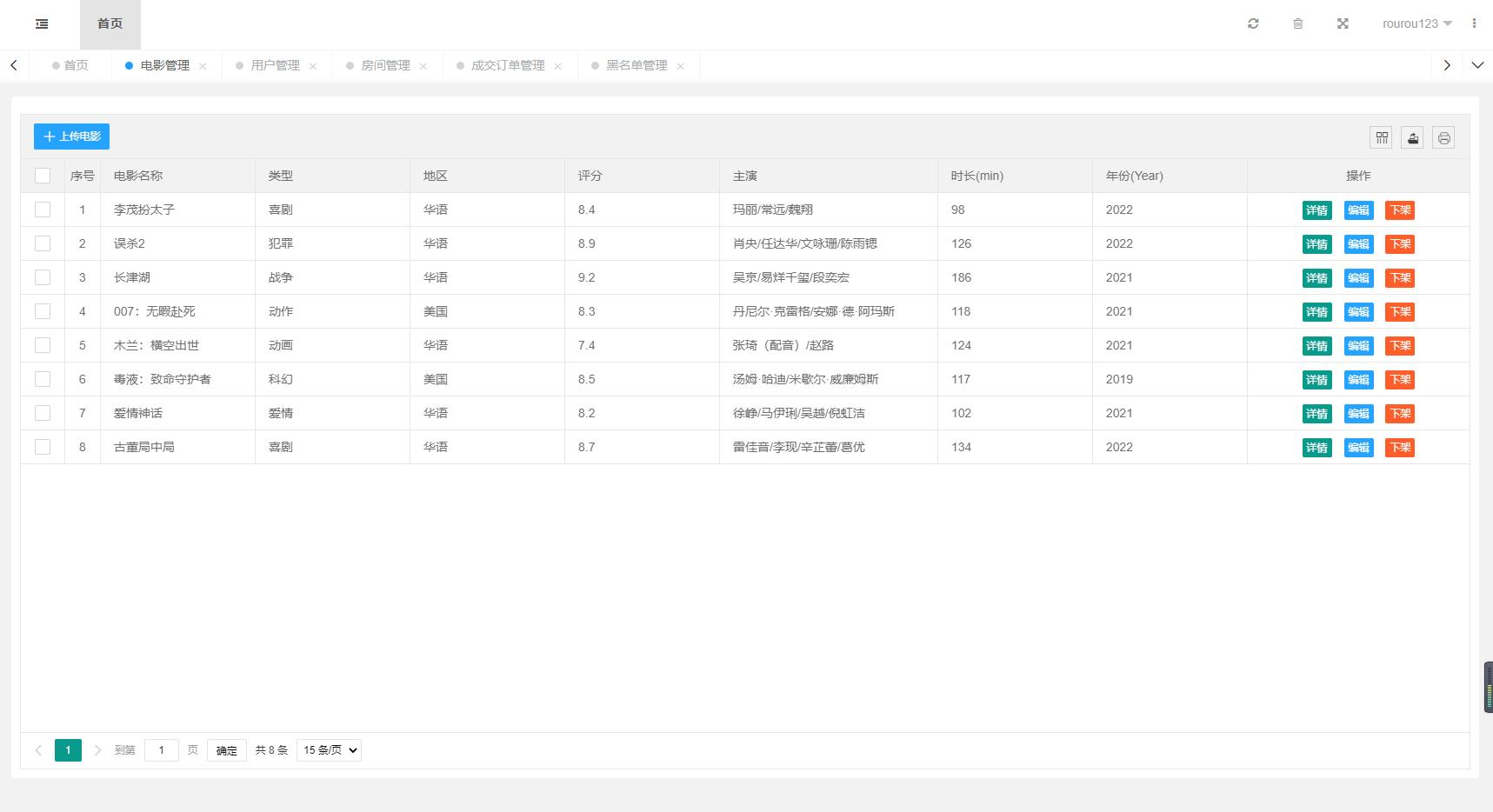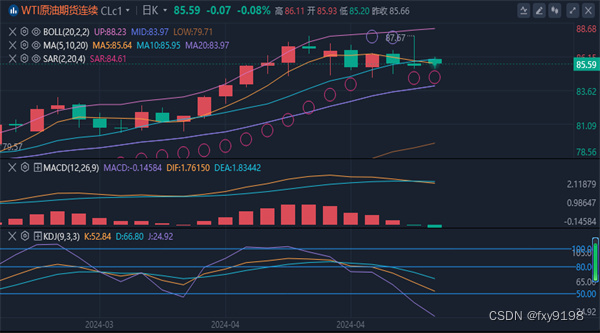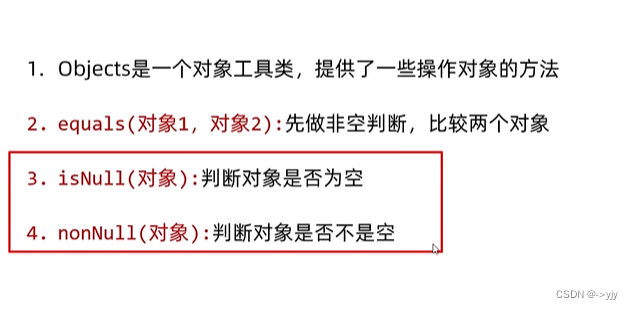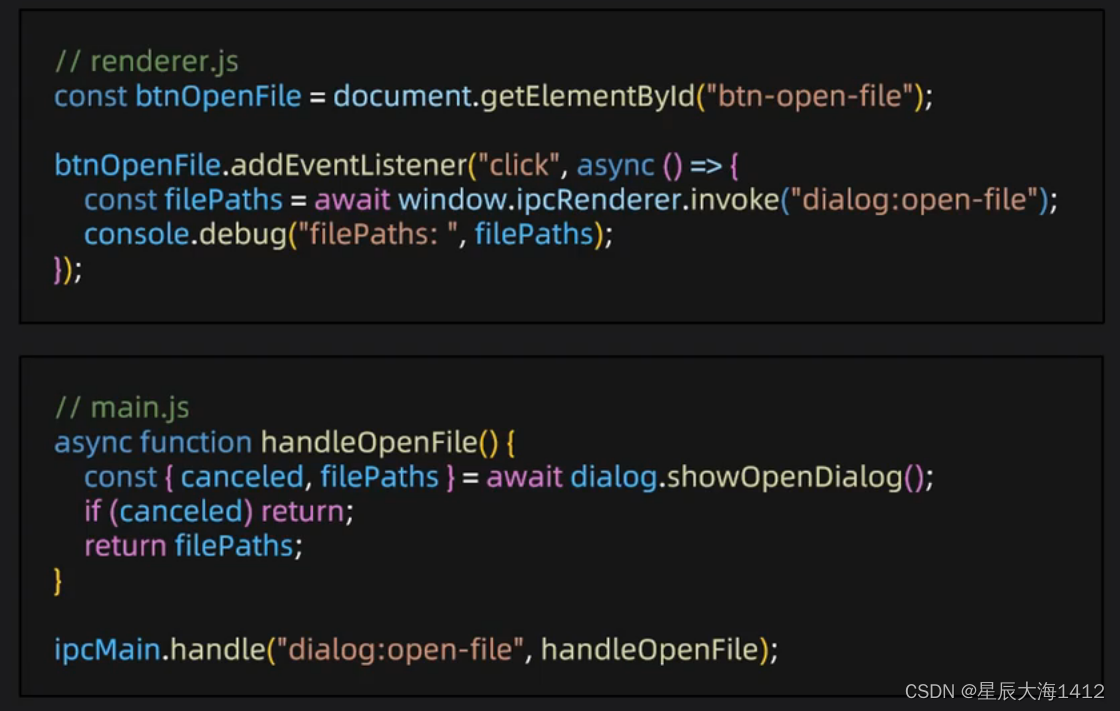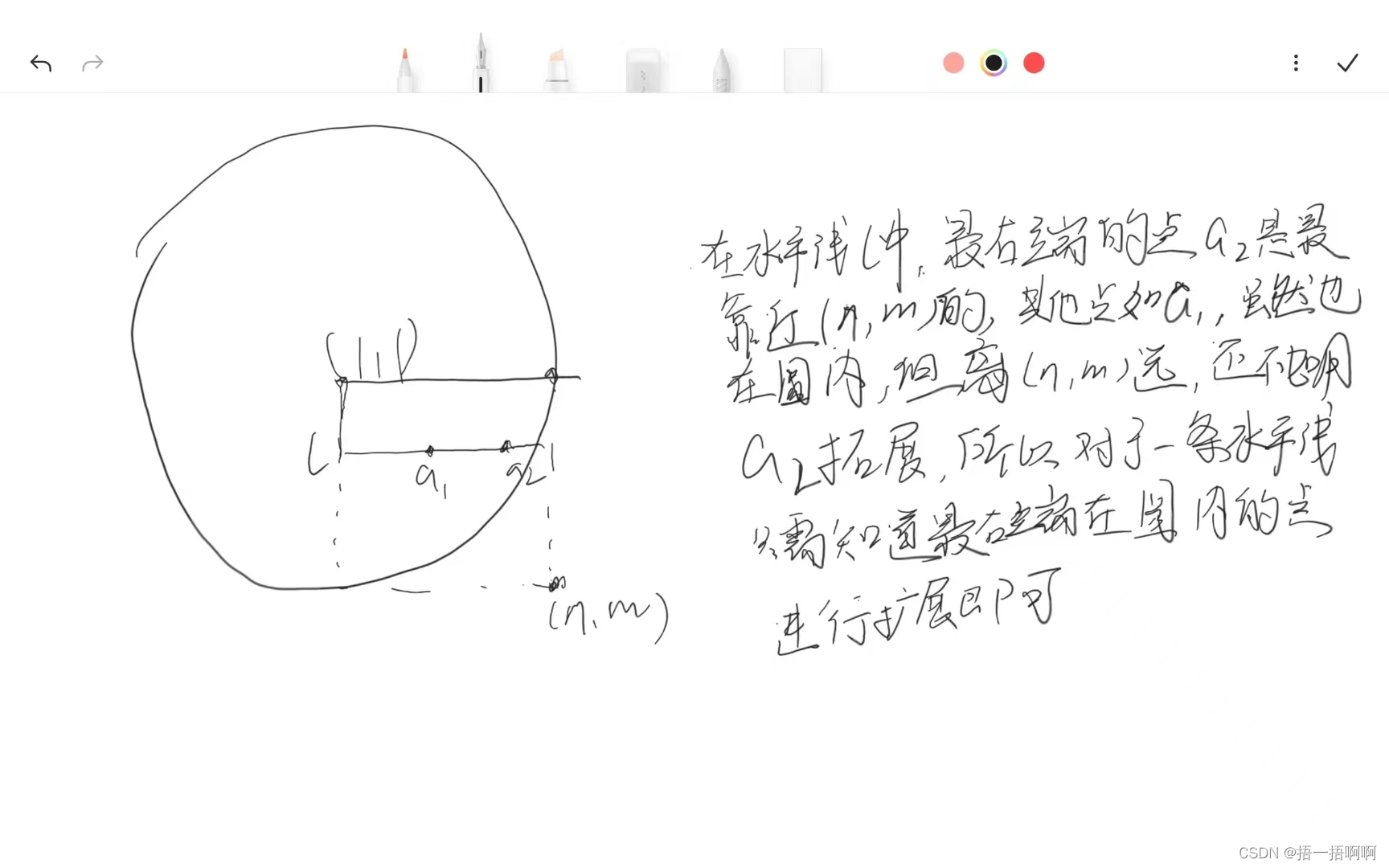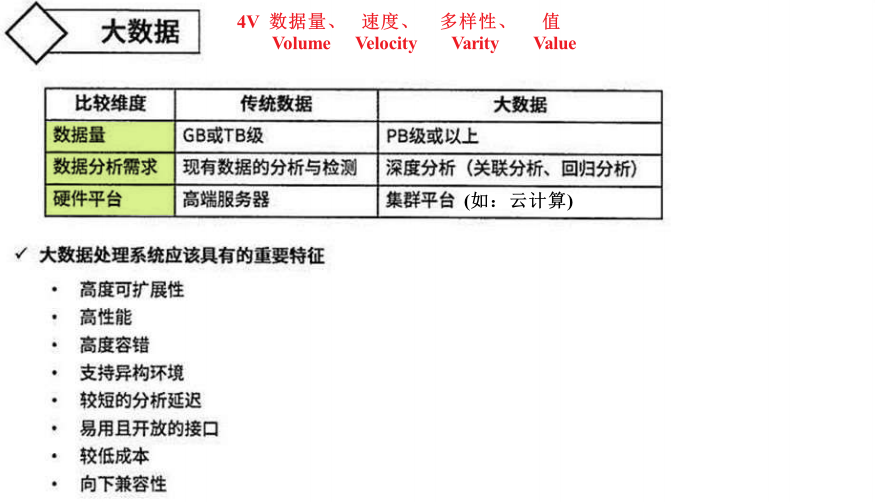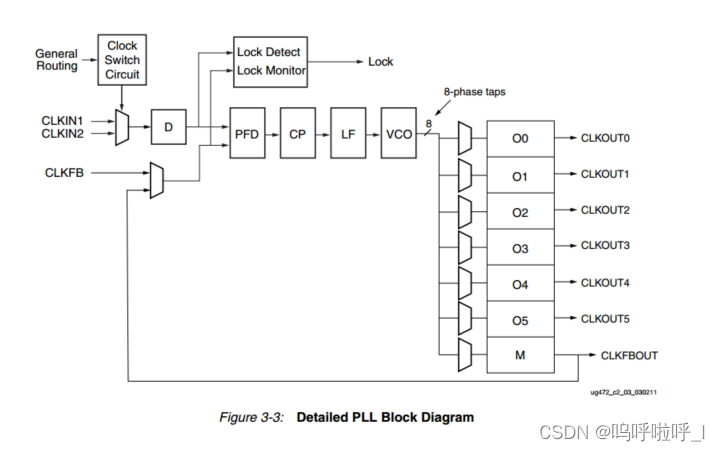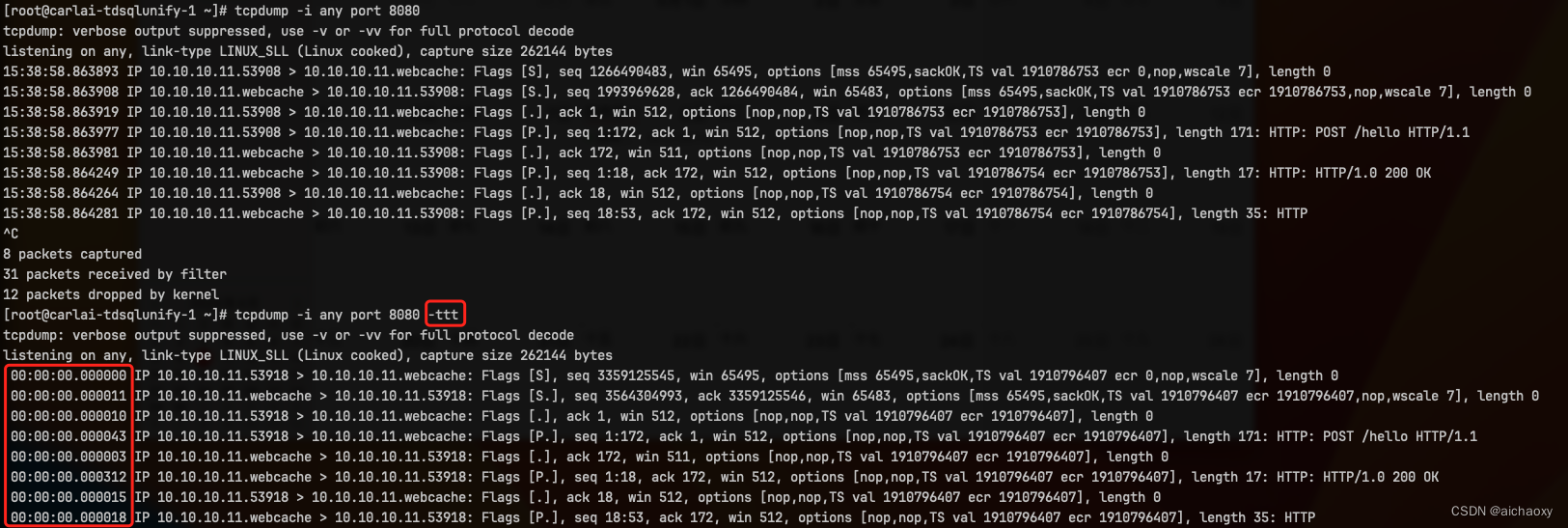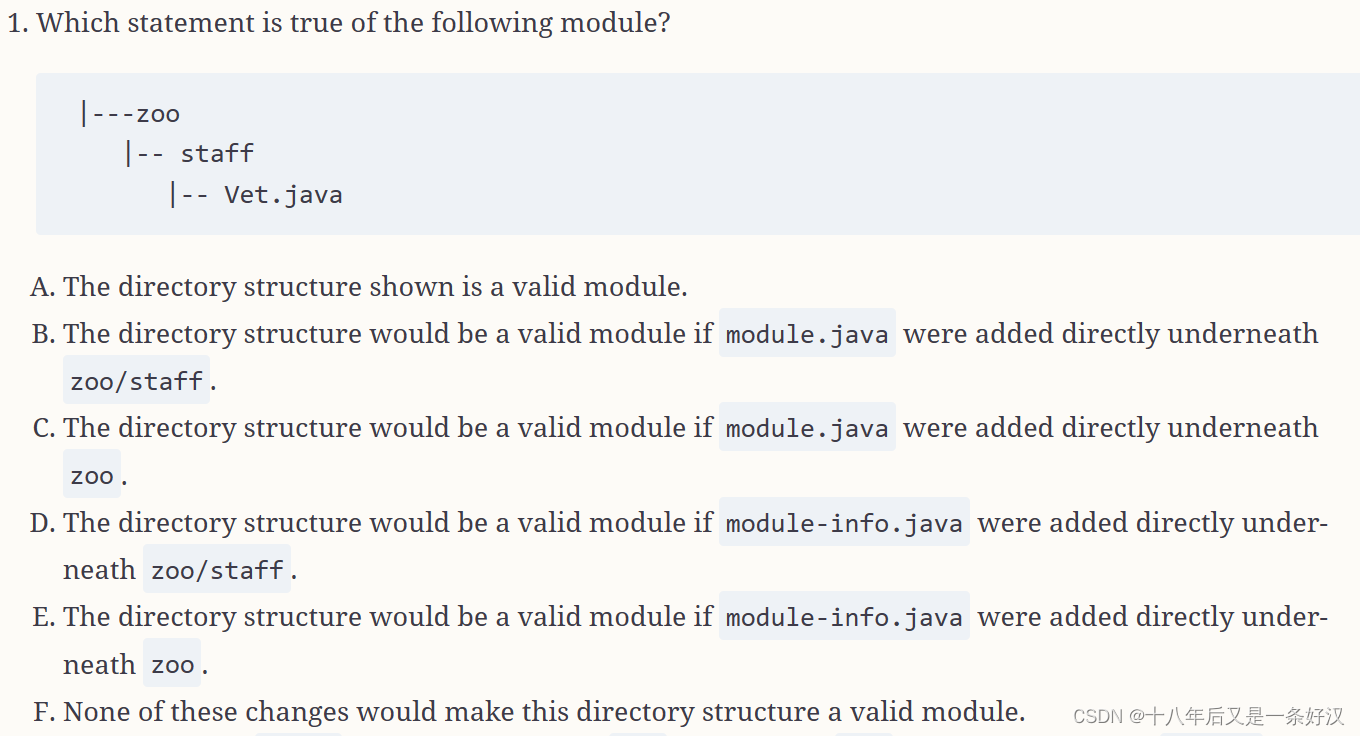
============================ 答案 ==============================
================================================================
================================================================
E. Modules are required to have a module-info.java file at the root directory of the module. Option E matches this requirement.
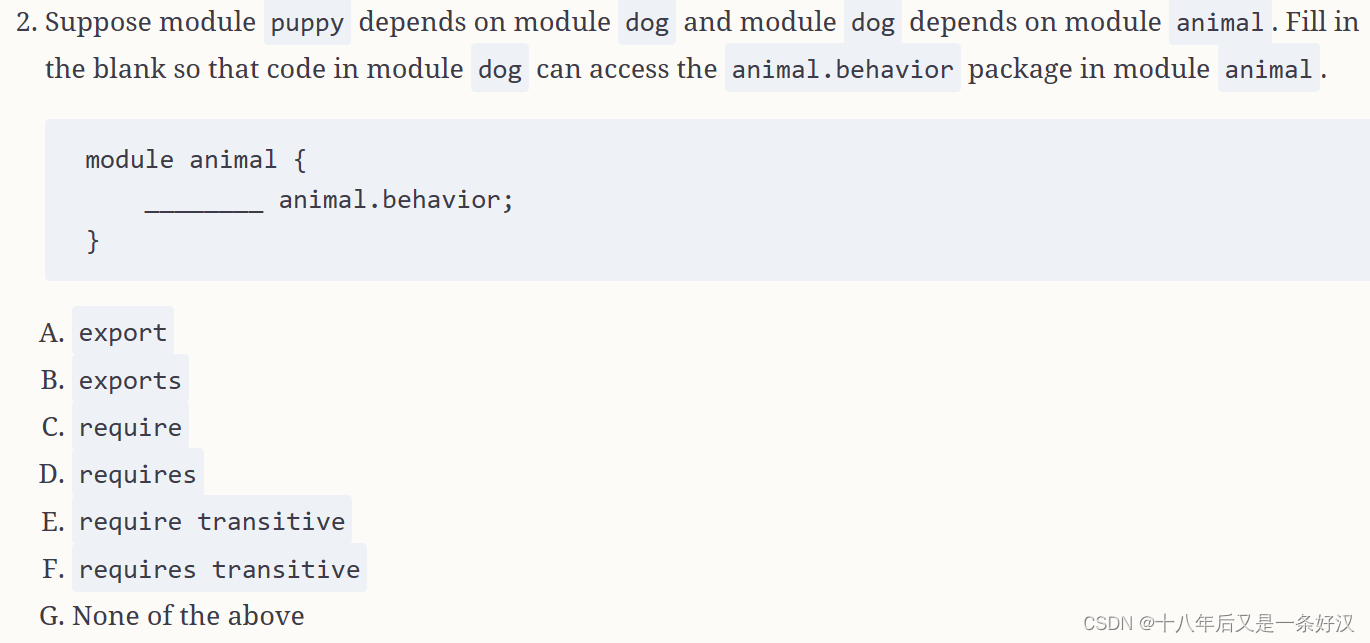
============================ 答案 ==============================
================================================================
================================================================
B. Options A, C, and E are incorrect because they refer to directives that don't exist. The exports directive is used when allowing a package to be called by code outside of the module, making option B the correct answer. Notice that options D and F are incorrect because of requires.
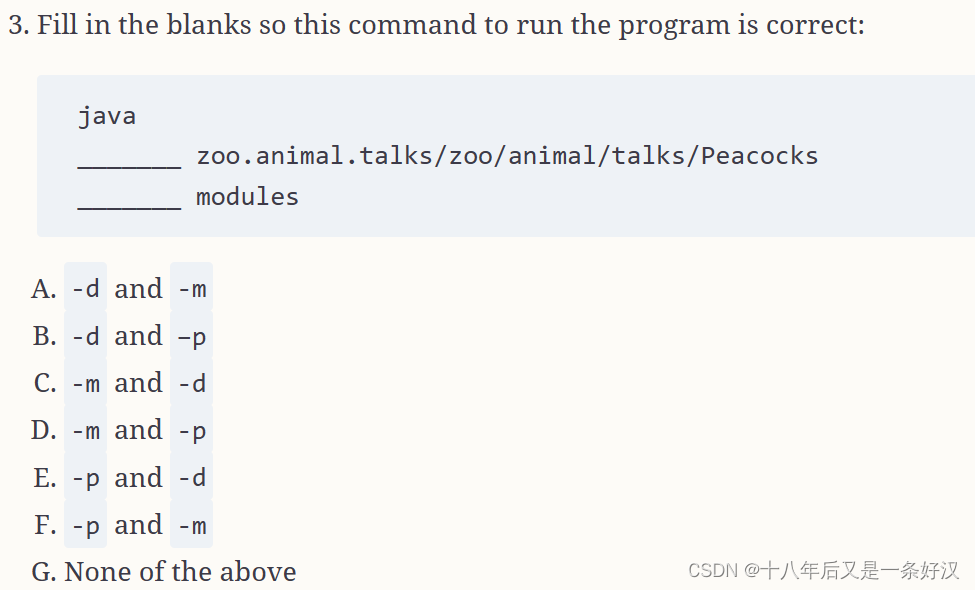
============================ 答案 ==============================
================================================================
================================================================
G. The -m or --module option is used to specify the module and class name. The -p or --module-path option is used to specify the location of the modules. Option D would be correct if the rest of the command were correct. However, running a program requires specifying the package name with periods (.) instead of slashes. Since the command is incorrect, option G is correct.

============================ 答案 ==============================
================================================================
================================================================
D. A service consists of the service provider interface and logic to look up implementations using a service locator. This makes option D correct. Make sure you know that the service provider itself is the implementation, which is not considered part of the service.

============================ 答案 ==============================
================================================================
================================================================
E, F. Automatic modules are on the module path but do not have a module-info.java file. Named modules are on the module path and do have a module-info. Unnamed modules are on the classpath. Therefore, options E and F are correct.

============================ 答案 ==============================
================================================================
================================================================
A, F. Options C and D are incorrect because there is no use directive. Options A and F are correct because opens is for reflection and uses declares that an API consumes a service.

============================ 答案 ==============================
================================================================
================================================================
A, B, E. Any version information at the end of the JAR filename is removed, making options A and B correct. Underscores (_) are turned into dots (.), making options C and D incorrect. Other special characters like a dollar sign ($) are also turned into dots. However, adjacent dots are merged, and leading/trailing dots are removed. Therefore, option E is correct.

============================ 答案 ==============================
================================================================
================================================================
A, D. A cyclic dependency is when a module graph forms a circle. Option A is correct because the Java Platform Module System does not allow cyclic dependencies between modules. No such restriction exists for packages, making option B incorrect. A cyclic dependency can involve two or more modules that require each other, making option D correct, while option C is incorrect. Finally, option E is incorrect because unnamed modules cannot be referenced from an automatic module.
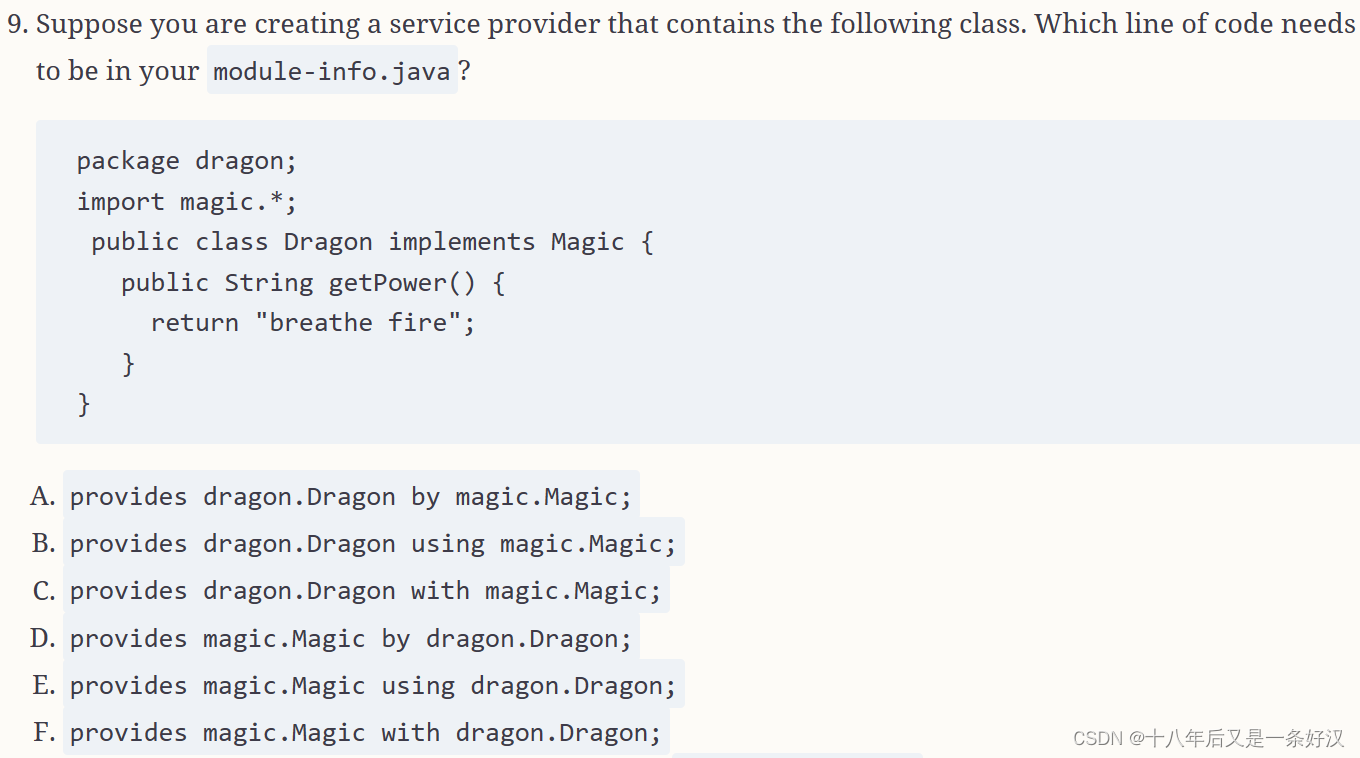
============================ 答案 ==============================
================================================================
================================================================
F. The provides directive takes the interface name first and the implementing class name second and also uses with. Only option F meets these two criteria, making it the correct answer.
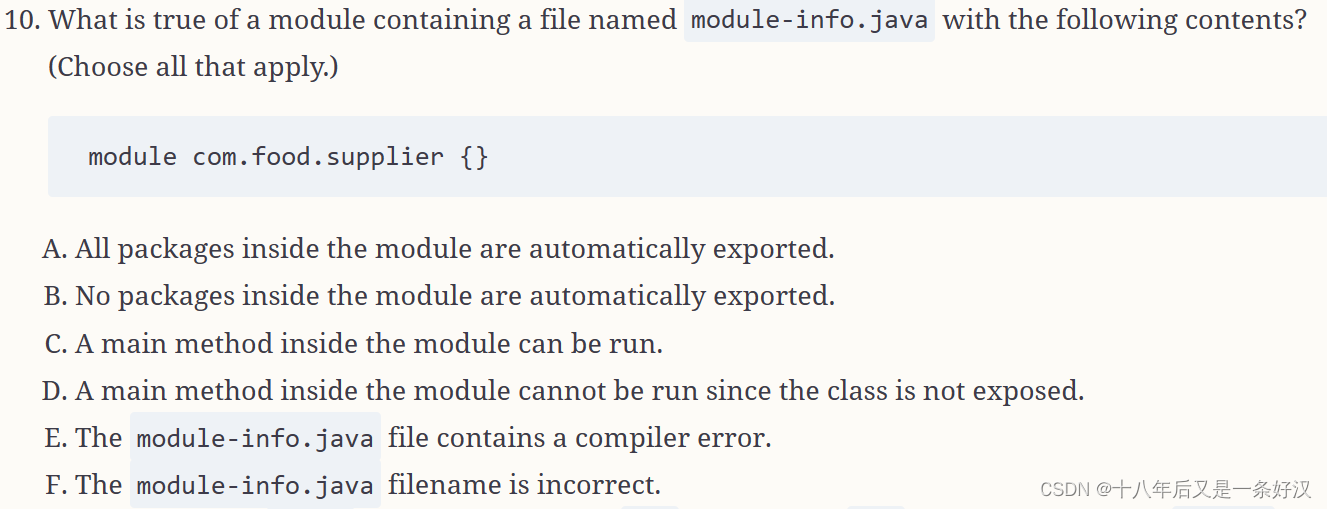
============================ 答案 ==============================
================================================================
================================================================
B, C. Packages inside a module are not exported by default, making option B correct and option A incorrect. Exporting is necessary for other code to use the packages; it is not necessary to call the main() method at the command line, making option C correct and option D incorrect. The module-info.java file has the correct name and compiles, making options E and F incorrect.
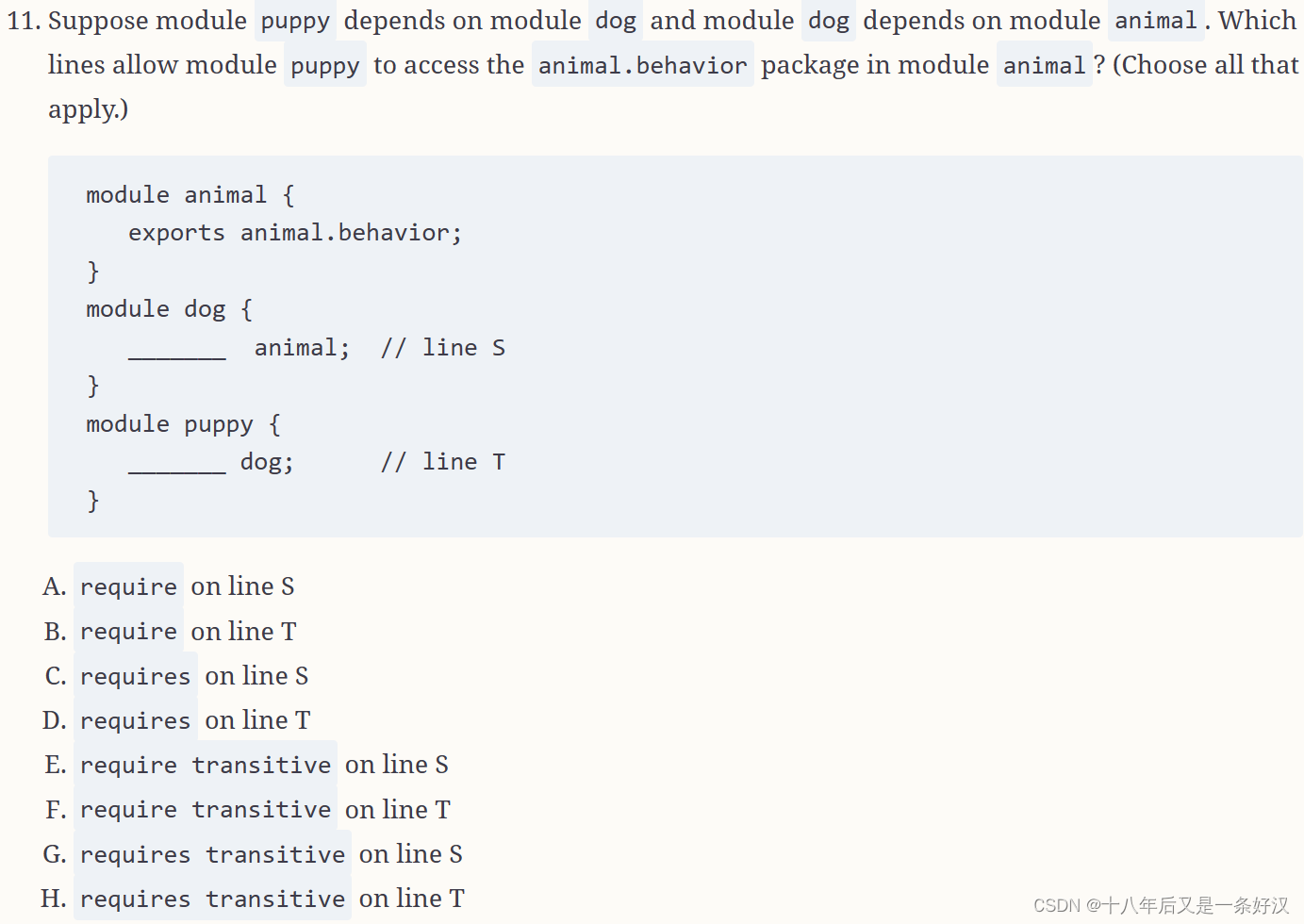
============================ 答案 ==============================
================================================================
================================================================
D, G, H. Options A, B, E, and F are incorrect because they refer to directives that don't exist. The requires transitive directive is used when specifying a module to be used by the requesting module and any other modules that use the requesting module. Therefore, dog needs to specify the transitive relationship, and option G is correct. The module puppy just needs requires dog, and it gets the transitive dependencies, making option D correct. However, requires transitive does everything requires does and more, which makes option H the final answer.
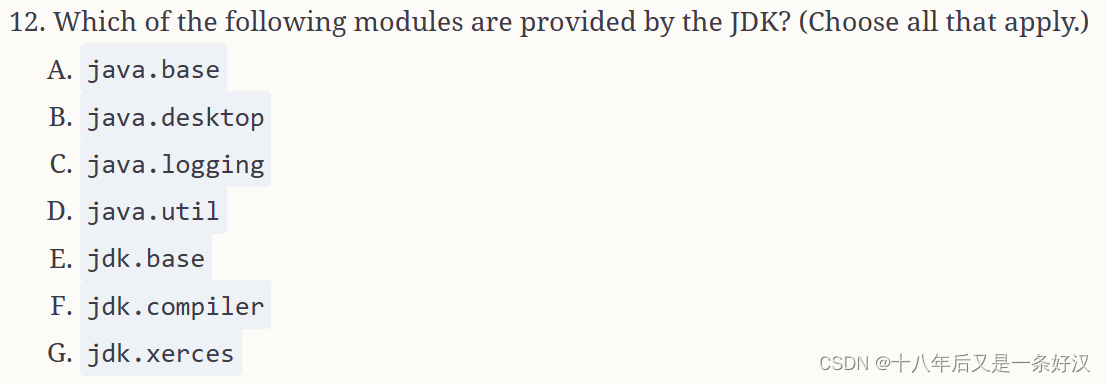
============================ 答案 ==============================
================================================================
================================================================
A, B, C, F. Option D is incorrect because it is a package name rather than a module name. Option E is incorrect because java.base is the module name, not jdk.base. Option G is wrong because we made it up. Options A, B, C, and F are correct.
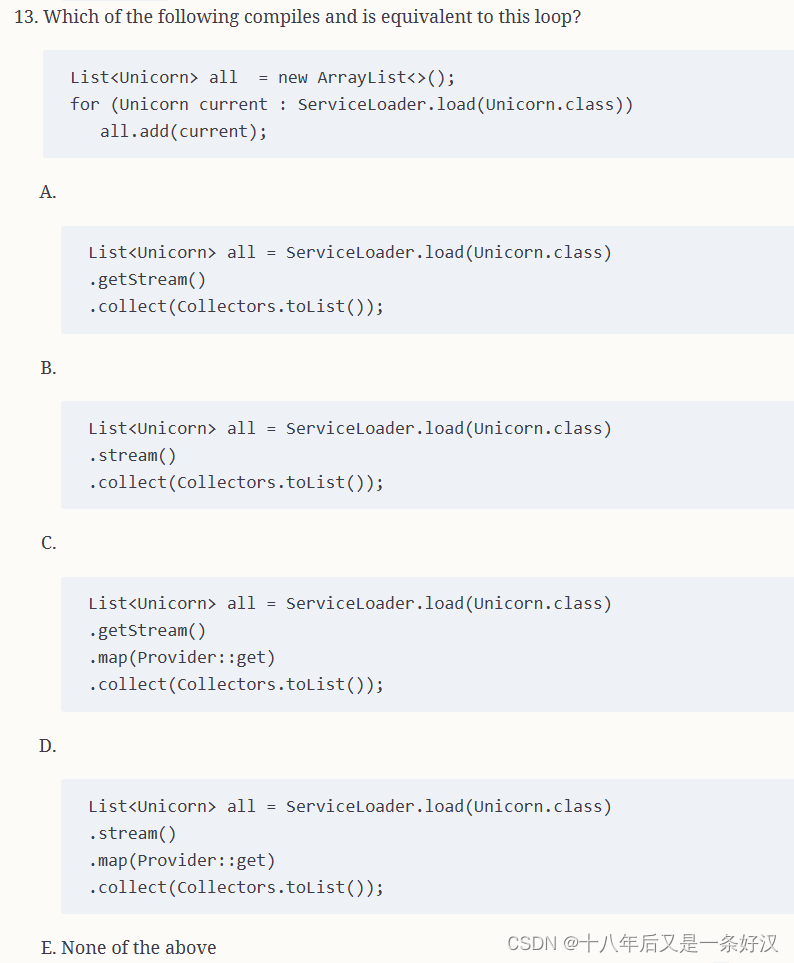
============================ 答案 ==============================
================================================================
================================================================
D. There is no getStream() method on a ServiceLoader, making options A and C incorrect. Option B does not compile because the stream() method returns a list of Provider interfaces and needs to be converted to the Unicorn interface we are interested in. Therefore, option D is correct.

============================ 答案 ==============================
================================================================
================================================================
C. The -p option is a shorter form of --module-path. Since the same option cannot be specified twice, options B, D, and F are incorrect. The --module-path option is an alternate form of -p. The module name and class name are separated with a slash, making option C the answer. Note that x-x is legal because the module path is a folder name, so dashes are allowed.

============================ 答案 ==============================
================================================================
================================================================
B. A top-down migration strategy first places all JARs on the module path. Then it migrates the top-level module to be a named module, leaving the other modules as automatic modules. Option B is correct as it matches both of those characteristics.

============================ 答案 ==============================
================================================================
================================================================
A. Since this is a new module, you need to compile it. However, none of the existing modules needs to be recompiled, making option A correct. The service locator will see the new service provider simply by having that new service provider on the module path.

============================ 答案 ==============================
================================================================
================================================================
E. Trick question! An unnamed module doesn't use a module-info.java file. Therefore, option E is correct. An unnamed module can access an automatic module. The unnamed module would simply treat the automatic module as a regular JAR without involving the module.info file.

============================ 答案 ==============================
================================================================
================================================================
D. The jlink command creates a directory with a smaller Java runtime containing just what is needed. The JMOD format is for native code. Therefore, option D is correct.

============================ 答案 ==============================
================================================================
================================================================
E. There is a trick here. A module definition uses the keyword module rather than class. Since the code does not compile, option E is correct. If the code did compile, options A and D would be correct.
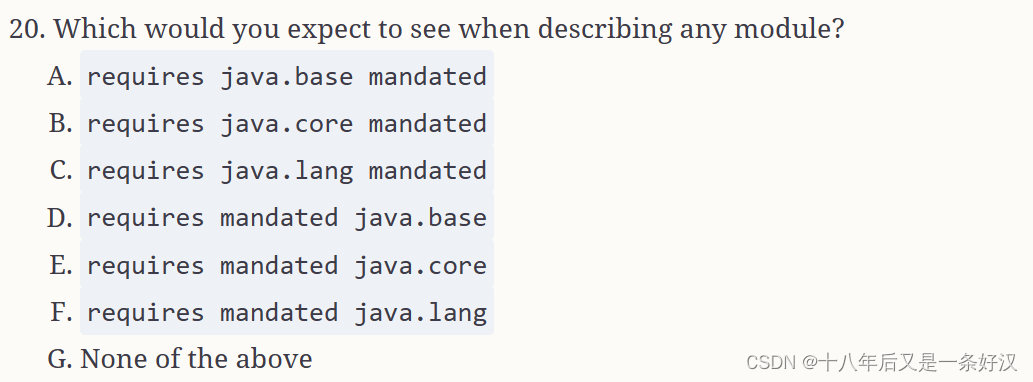
============================ 答案 ==============================
================================================================
================================================================
A. When running java with the -d option, all the required modules are listed. Additionally, the java.base module is listed since it is included automatically. The line ends with mandated, making option A correct. The java.lang is a trick since it is a package that is imported by default in a class rather than a module.

============================ 答案 ==============================
================================================================
================================================================
H. This question is tricky. The service locator must have a uses directive, but that is on the service provider interface. No modules need to specify requires on the service provider since that is the implementation. Since none are correct, option H is the answer.

============================ 答案 ==============================
================================================================
================================================================
A, F. An automatic module exports all packages, making option A correct. An unnamed module is not available to any modules on the module path. Therefore, it doesn't export any packages, and option F is correct.
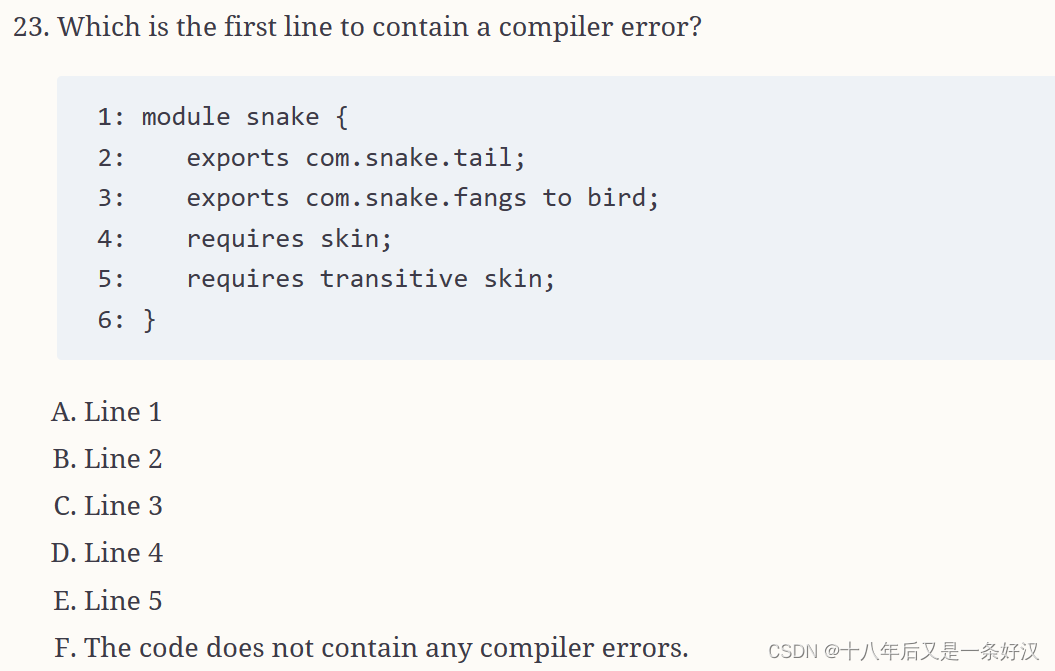
============================ 答案 ==============================
================================================================
================================================================
E. The module name is valid, as are the exports statements. Lines 4 and 5 are tricky because each is valid independently. However, the same module name is not allowed to be used in two requires statements. The second one fails to compile on line 5, making option E the answer.

============================ 答案 ==============================
================================================================
================================================================
A. Since the JAR is on the classpath, it is treated as a regular unnamed module even though it has a module-info.java file inside. Remember from learning about top-down migration that modules on the module path are not allowed to refer to the classpath, making options B and D incorrect. The classpath does not have a facility to restrict packages, making option A correct and options C and E incorrect.

============================ 答案 ==============================
================================================================
================================================================
A, C, D. Options A and C are correct because both the consumer and the service locator depend on the service provider interface. Additionally, option D is correct because the service locator must specify that it uses the service provider interface to look it up.
